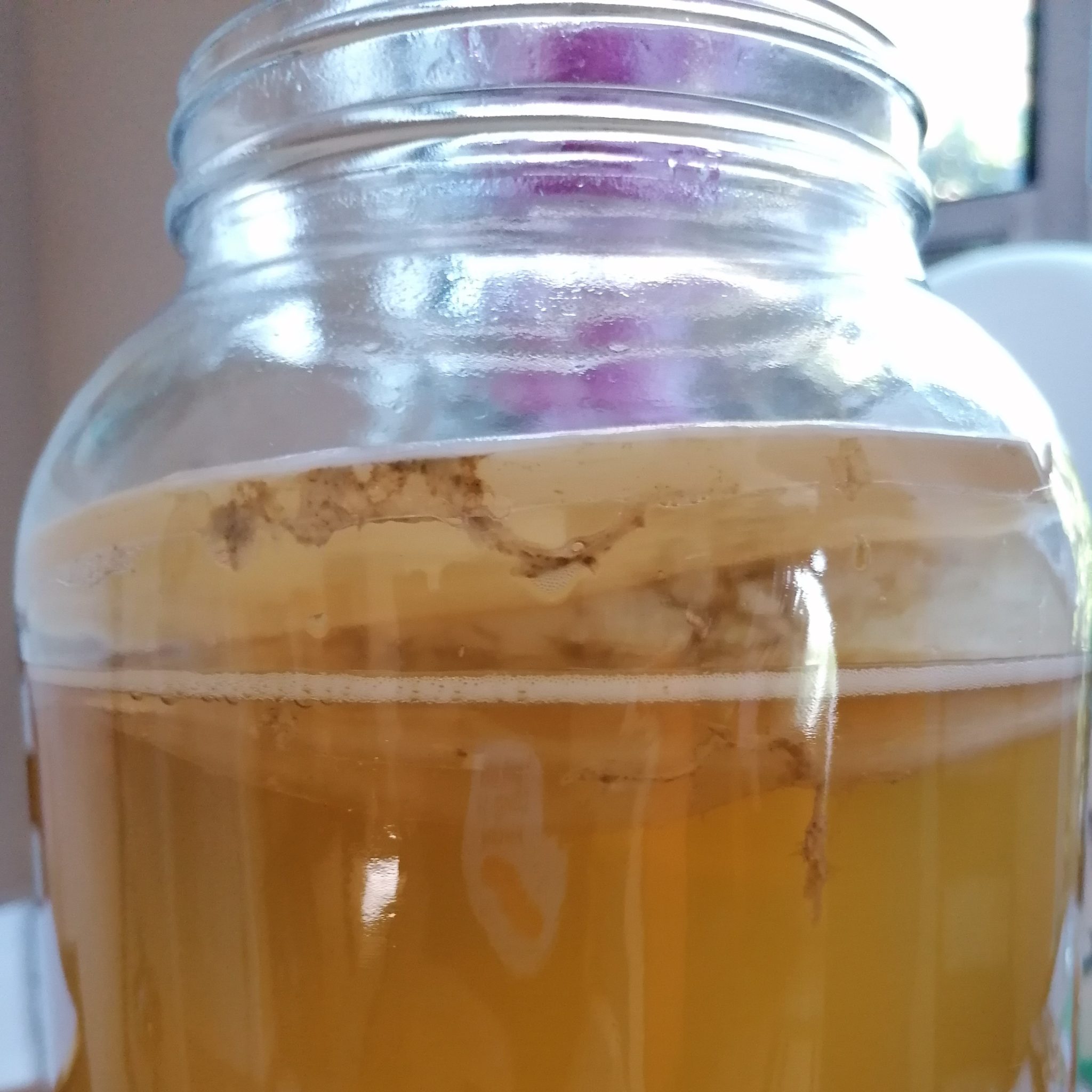
There often comes a time in each kombucha brewer’s journey where we question the health of our kombucha SCOBY. Do you have an unhealthy kombucha SCOBY? Or worse yet, do you have a dead SCOBY? It’s time to settle these doubts and review the facts of kombucha SCOBYs!
Unhealthy Kombucha SCOBY or Yeast?
One of the most common inquiries we get in regards to suspicious looking kombucha SCOBYs pertains to yeast. Kombucha yeast, when brewed with black tea, is generally brown or black looking. For a new kombucha brewer, it can certainly take some getting used to.
Kombucha yeast presents itself in many different forms: it often forms as long, brown strands hanging down from your SCOBY. They might even form of a large brown clump on top of your SCOBY. Yeast can also gather and float around at the bottom of your jar. It can even detach from your SCOBY and appear as a dark suspicious clump floating around your brew on its own; this is especially likely to happen if you have packaged a SCOBY in a small container to give to a friend.
In the image below, you will see some yeast hanging from the SCOBY on the right. You can also see some yeast gathered at the bottom of each of the jars. Both SCOBYs and brews are healthy and are NOT cause for concern! Sometimes yeast can also create other concerns…

SCOBY “Jumping” out of Jar or Rising Above Tea
In the image below, you can see another example of yeast formation on a kombucha SCOBY. This is totally healthy. You might also have noticed that the SCOBY has risen above the tea level—is it trying to free itself to take over your home? Fortunately, it is not. This is a normal consequence of the carbonation let off by the yeast below it. As the yeast releases CO2, it can cause your SCOBY to raise up like this. You can push it down to the surface if you are more comfortable, but it is totally fine to leave it, too! As you can see in this instance, you will likely just end up with an extra layer of SCOBY forming on the surface of the brew.

Unhealthy kombucha SCOBY? Various colors, bumps, or holes on the surface
Multiple colors on your SCOBY, such as in the below image, are totally fine! This is just a consequence of older SCOBY layers integrating with your new baby SCOBY.
When this happens, there is often a lot of carbonation pushing your older SCOBY up to the surface of your brew. This also means you can end up with gaps in your SCOBY (such as in the top left of this image). This is a normal consequence of a significant amount of carbonation surfacing in this area and is again nothing to worry about,
Bumps may also form on the surface of your SCOBY in these instances. This is absolutely normal— sometimes as the kombucha ferments, bubbles of carbonation are let off and trapped below the forming SCOBY’s surface, creating upwards pressure on the SCOBY. This results in bumps of various sizes on the SCOBYs surface.
In short, all of this means your SCOBY has a healthy, active yeast population. The yeast are responsible for creating carbonation, and they are letting off such big and strong bubbles that they are leaving their mark on your SCOBY’s surface!

What would a Dead SCOBY look like?
While there isn’t really a visual indication that your mother SCOBY was dead, your brew would be able to tell you if this were the case. If your SCOBY is old (and starved) or temperature-damaged, it could die. In this case, you would not grow a baby SCOBY on the surface of your brew. Do not jump the gun on this—we recommend giving your brew at least 10 days to begin growing a baby SCOBY on the surface before calling the T.O.D. on your mother SCOBY. It is important to have your brew undisturbed in a dark space with airflow during this time.If you have no growth on the surface after 10 days, there is a good chance your mother SCOBY may not be active.
Can My Kombucha Brew be Bad without Dead SCOBY?
Your main concern with an active brew would be mold. Unlike yeast, mold is fuzzy in appearance. When it forms on kombucha, it will usually be either blue/green or white. Regardless of color, it will always look fuzzy and dry whereas you SCOBY and yeast will look wet and slimy. Mold need oxygen, so it would form on the surface of your brew. The below picture shows mold on a SCOBY. It is NOT a healthy SCOBY.

Show Me More SCOBYs!
If you are still unsure about your SCOBY, check out our healthy SCOBY article for more common scenarios and SCOBY images. You can also find even more SCOBY info on the “SCOBY” section of our Learn page—there is a collection of SCOBY articles here! Happy brewing!






Thanku as I’m learning and pics and info helpful